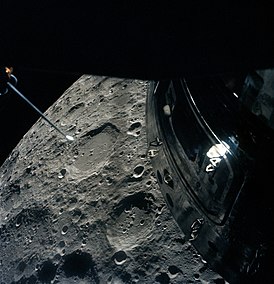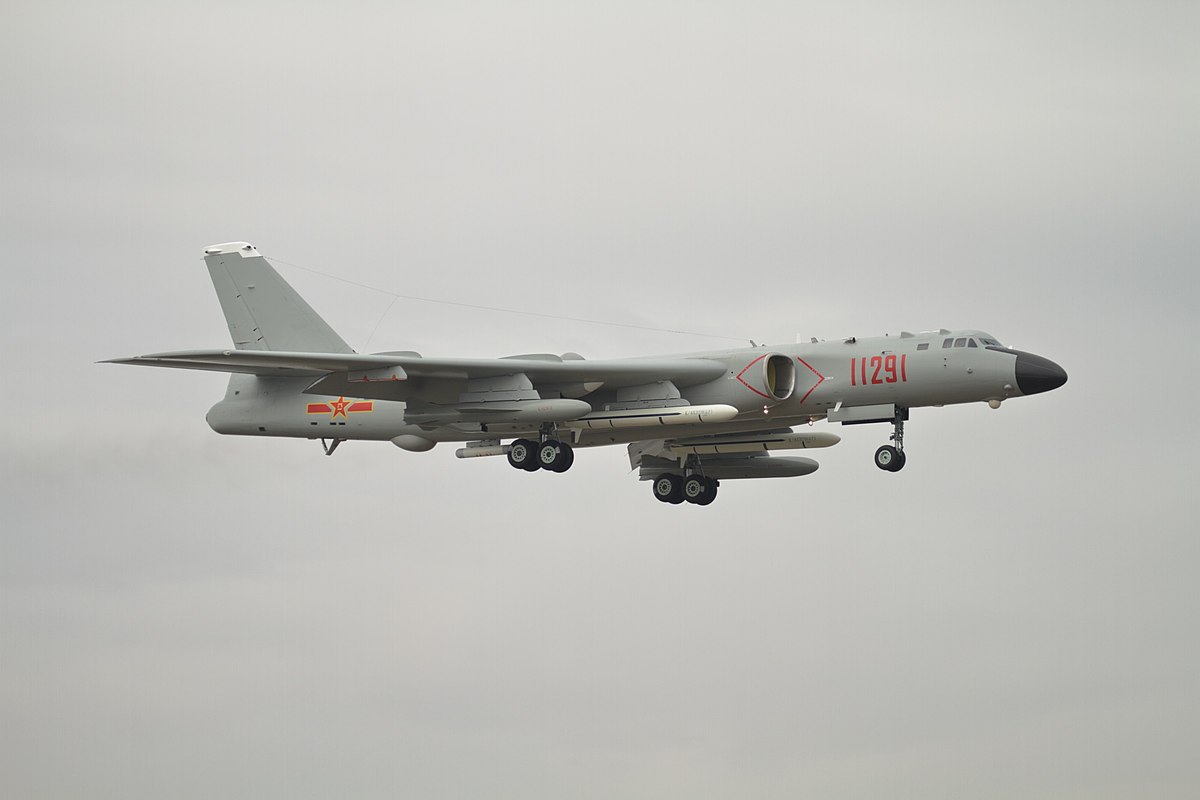
Apollo 13 mission

An Apollo 13 crew member boarded an SH-3D Sea King rescue helicopter from the USS Iwo Jima landing helicopter.
Late Monday evening, April 13, 1970. At Mission Control, located at the Manned Spacecraft Center (MCC) in Houston, controllers are preparing to hand over a shift. The Apollo 13 controlled mission is expected to be the third manned landing on the moon. So far it works without much problem, so far, from a distance of more than 300 XNUMX. km before Moscow time, the words of one of the astronauts, Jacek Swigert, come: Okay, Houston, we have a problem here. Neither Swigert nor the MSS yet know that this problem will become the greatest challenge in the history of astronautics, in which the life of the crew will hang in the balance for several tens of hours.
The Apollo 13 mission was the second of three planned missions under Mission H, a program aimed at precision landing at a given location and conducting extended exploration there. On December 10, 1969, NASA chose a target for him on the surface of the Silver Globe. This place was the upland region of the Cone (cone) crater, located near the Fra Mauro formation in the Mare Imbrium. It was believed that in the area located near the crater of the same name, there should be a lot of material from the deeper layers of the Moon, formed as a result of the release of matter caused by the fall of a large meteorite. The launch date was set for March 12, 1970, with a backup date for April 11. The takeoff was to be carried out from the LC-39A complex at Cape Kennedy (as Cape Canaveral was called in 1963-73). The Saturn-5 launch vehicle had the serial number AS-508, the base ship CSM-109 (call sign Odyssey) and the expedition ship LM-7 (call sign Aquarius). Following the unwritten rule of Apollo crew rotation, the dual crew waited two missions before flying as the primary. So, in the case of Apollo 13, one should expect the nomination of Gordon Cooper, Donn Eisele and Edgar Mitchell, the deputies of Apollo 10. However, for various disciplinary reasons, the first two were out of the question, and Donald Slayton, who was in charge of selecting astronauts for flights, decided in March 1969 to form a completely different crew, which included Alan Shepard, Stuart Rus and Edgar Mitchell.
Because Shepard had only recently regained active astronaut status following a complicated ear surgery, higher factors decided in May that he would need more training. Therefore, on August 6, this crew was assigned to Apollo 14, which was supposed to fly in half a year, and it was decided to transfer commander (CDR) James Lovell, command module pilot (command module pilot) to "thirteen, CMP) Thomas Mattingly and pilot Lunar Module (LMP) Fred Hayes. Their reserve team was John Young, John Swigert and Charles Duke. As it turned out shortly before launch, training two crews for each mission made a lot of sense ...

An Apollo 13 crew member boarded an SH-3D Sea King rescue helicopter from the USS Iwo Jima landing helicopter.
start
Due to budget cuts, of the originally planned 10 manned moon landings, the expedition was to be called Apollo 20 first, and then also Apollo 19 and Apollo 18. The remaining seven missions were to be completed in about a year and a half, about once every four months, one at a time, starting with the first in July 1969. Indeed, Apollo 12 flew as early as November 1969, “1970” was scheduled for March 13, and “14” for July. Separate elements of the Thirteen infrastructure began to appear on the cape even before the start of the first lunar expedition. On June 26, North American Rockwell provided the Command Module (CM) and Service Module (SM) to the KSC. In turn, Grumman Aircraft Corporation delivered both parts of the expeditionary vessel on June 27 (on-board module) and June 28 (landing module), respectively. On June 30, CM and SM were merged, and LM was completed on July 15 after testing communication between CSM and LM.
The rocket for the Thirteen was completed on July 31, 1969. On December 10, the assembly of all elements was finally completed and the rocket was ready for launch from the VAB building. Transportation to the LC-39A launch pad took place on 15 December, where various integration tests were conducted over the course of several weeks. On January 8, 1970, the mission was rescheduled for April. On March 16, during the Countdown Demonstration Test (CDDT), a pre-takeoff procedure, before which the cryogenic tanks are also filled with oxygen. During the inspection, problems were identified with emptying tank No. 2. It was decided to turn on electric heaters in it so that liquid oxygen evaporated. This procedure was successful and the ground team did not identify any problems with it. The bomb exploded 72 hours before takeoff. It turned out that Duke's children from the reserve brigade had contracted rubella. A cursory interview showed that of all the "13" astronauts, only Mattingly did not suffer from this disease, and that he might not have the appropriate antibodies, which risked getting sick during the flight. This led to him being moved away from flying and replaced by Swigert.
The pre-takeoff countdown was started from the T-28 hourly mode a day before the scheduled launch on April 11th. Apollo 13 takes off exactly at 19:13:00,61, 13 UTC, in Houston then 13:184 ... The start of the cruising flight is exemplary - the first stage engines are turned off, it is rejected, the second stage engines begin to work. Rescue rocket LES rejected. Five and a half minutes after takeoff, the vibration of the rocket (pogo) begins to increase. They are caused by the supply of fuel to the propulsion system, which enters into resonance with the vibrations of the remaining elements of the rocket. This can disable the propulsion system and therefore the entire rocket. The central engine, which is the source of these vibrations, crashed more than two minutes ahead of schedule. Extending the rest by more than half a minute allows you to maintain the correct flight path. The third stage begins its work at the end of the tenth minute. It takes just over two and a half minutes. The complex enters a parking orbit with an altitude of 186-32,55 km and an inclination of XNUMX °. All ship and level systems are being tested over the next two hours. Finally, permission is given to execute the Trans Lunar Injection (TLI) maneuver, which will send the Apollo spacecraft to the Moon.
The maneuver began at T+002:35:46 and lasted almost six minutes. The next phase of the mission is to detach the CSM from the S-IVB rank and then dock it to the LM. At three hours and six minutes into the flight, the CSM separates from the S-IVB. Thirteen minutes later the crew docked at the LM. At the fourth hour of the flight, the crew pulls out the S-IVB lunar lander. The joint spacecraft CSM and LM together continue their independent flight to the Moon. During a powerless flight to the Moon, the CSM / LM installation was brought into controlled rotation, the so-called. Passive thermal control (PTC) to ensure uniform heating of the ship by solar radiation. At the thirteenth hour of the flight, the crew goes on a 10-hour rest, the first day of the flight is counted as very successful. The next day at T+30:40:50, the crew performs a hybrid orbital maneuver. It allows you to reach places on the Moon with a higher selenographic latitude, but does not provide a free return to Earth in the event of an engine failure. The crew retires again, unaware that this will be the last full rest in the coming days.
Explosion!
Entering the LM and checking its systems is accelerated by four hours, starting from the 54th hour of the mission. During it there is a live TV broadcast. Shortly after its completion and return to the CSM, mission control instructs to mix liquid oxygen cylinder 2, the sensor of which is showing anomalous readings. Destratification of the contents of the tank can return it to normal operation. Switching the blender on and off took only a few seconds. 95 seconds later, at T+55:54:53, the astronauts hear a loud bang and feel the ship begin to shake. At the same time, signal lamps light up, informing about voltage fluctuations in the electrical network, orientation engines turn on, the ship loses contact with the Earth for a short time and restores it using an antenna with a wider beam. 26 seconds later, Swigert delivers the memorable words, "Okay, Houston, we've got a problem here." When asked to repeat, the commander clarifies: Houston, we have a problem. We had an undervoltage on main bus B. So there is information on Earth that there is a voltage drop on power bus B. But what is the reason for this?
